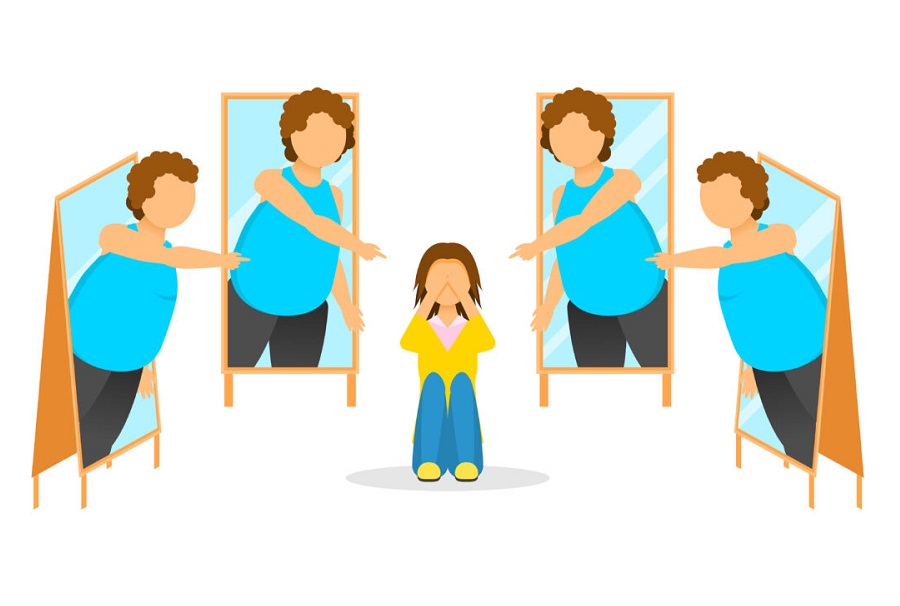
Published :
Updated :

Body dysmorphic disorder is a mental health condition in which you can't stop thinking about one or more perceived defects or flaws in your appearance, a flaw that appears minor or can't be seen by others. But you may feel so embarrassed and anxious that you may avoid many social situations.
When you have body dysmorphic disorder, you intensely focus on your appearance and body image, repeatedly checking the mirror, sometimes for many hours each day. Your perceived flaw and the repetitive behaviours cause significant distress and impact your ability to function in your daily life.
You may seek out numerous cosmetic procedures to try to 'fix' your perceived flaw. Afterwards, you may feel temporary satisfaction or a reduction in your distress, but often, the anxiety returns, and you may resume searching for other ways to fix your perceived flaw.
Signs and symptoms of body dysmorphic disorder
Being excessively preoccupied with a perceived flaw in appearance that others can't see or appears minor. Having a strong belief that you have a defect in your appearance that makes you ugly or deformed.
Believing that others take special notice of your appearance in a negative way or mock you. Engaging in behaviours aimed at fixing or hiding the perceived flaw that is difficult to resist or control, such as frequently checking the mirror or skin picking.
Attempting to hide perceived flaws with styling, makeup or clothes. Constantly comparing your appearance with others. Often seeking reassurance about your appearance from others. Having perfectionist tendencies. Seeking cosmetic procedures with little satisfaction. Avoiding social situations.
Shame and embarrassment about your appearance may keep you from seeking treatment for body dysmorphic disorder. But if you have any signs or symptoms, see a mental health professional.
Body dysmorphic disorder usually doesn't get better on its own. If left untreated, it may get worse over time, leading to anxiety, severe depression, and even suicidal thoughts and behaviour.
Suicidal thoughts and behaviour are familiar with body dysmorphic disorder. If you think you may hurt yourself or attempt suicide, get help right away.
It's not known precisely what causes body dysmorphic disorder. Like many other mental health conditions, body dysmorphic disorder may result from a combination of issues, such as a family history of the disorder, negative evaluations or experiences about your body or self-image, and abnormal brain function or abnormal levels of the brain chemical called serotonin.
Body dysmorphic disorder typically starts in the early teenage years, and it affects both males and females. Certain factors seem to increase the risk of developing or triggering body dysmorphic disorder, which includes
having blood relatives with body dysmorphic disorder or obsessive-compulsive disorder, adverse life experiences, such as childhood teasing, neglect or abuse or specific personality traits, such as perfectionism, etc.
Societal pressure or expectations of beauty. Having another mental health condition, such as anxiety or depression.
There are multiple complications associated with body dysmorphic disorder, including. For example, low self-esteem, social isolation, major depression or other mood disorders, suicidal thoughts or behaviour, anxiety disorders, including social anxiety disorder (social phobia), obsessive-compulsive disorder, eating disorders, and drug abuse.
There's no known way to prevent body dysmorphic disorder. However, because it often starts in the early teenage years, identifying the disorder early and starting treatment may be beneficial. Long-term maintenance treatment also may help prevent symptoms.
samiulhaquesami366@gmail.com


 For all latest news, follow The Financial Express Google News channel.
For all latest news, follow The Financial Express Google News channel.